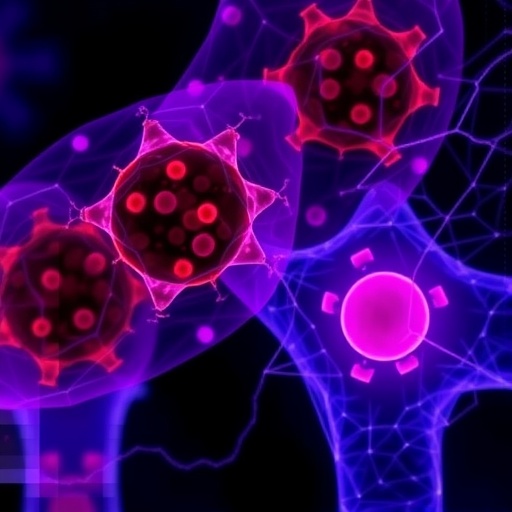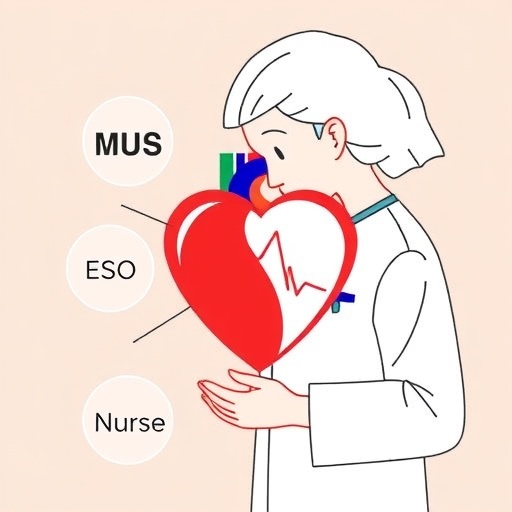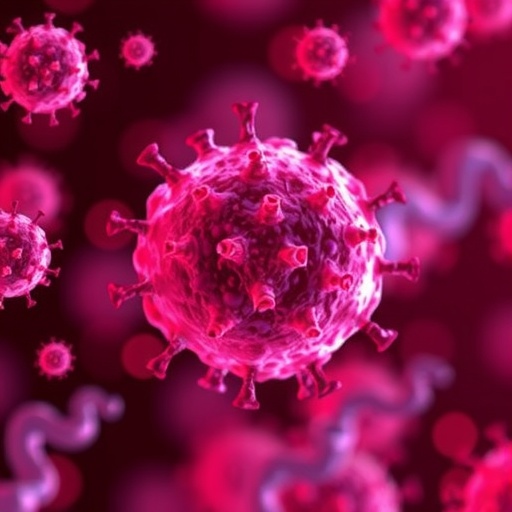Recent developments in the field of cancer diagnostics have ushered in a promising era of early detection and treatment possibilities, especially concerning circulating tumor cells (CTCs). These unique cells present in the bloodstream have become the focal point of research, revealing critical insights into tumor dynamics and metastasis. Innovative approaches to classify and analyze CTCs are essential for improving prognostic assessments and guiding personalized therapies. Among these groundbreaking advancements, the development of a dual-branch deep learning network has emerged, showcasing a sophisticated method designed to enhance the accuracy of CTC classification.
Harnessing the capabilities of artificial intelligence, particularly deep learning techniques, researchers are now adept at training models that can recognize patterns within complex biological data. The dual-branch architecture, as proposed by Han and colleagues, employs two distinct pathways to process and classify CTC images. This innovative network is tailored to capture both morphological and textural features of CTCs, which are crucial for differentiating between malignant and benign cells. The implications of such sophisticated analysis could lead to significant breakthroughs, altering the landscape of cancer diagnostics.
In the typical cancer diagnostic pipeline, the identification of CTCs often begins with blood sample extraction from patients. Once isolated, these cells require intricate imaging techniques for detailed analysis. The classification of CTCs traditionally relied upon the expertise of pathologists, who meticulously examine stained samples under microscopes. However, as the volume of data continues to grow exponentially, the reliance on human analysis alone becomes increasingly untenable. Herein lies the pivotal role of automated and AI-driven solutions.
The dual-branch deep learning network navigates the complexities of CTC analysis by separating the chemical and physical properties of these cells into two branches. One branch focuses on the spatial characteristics of the cells, utilizing convolutional neural networks to identify subtle variations in cell shapes and sizes. The other branch assesses texture features, extracting information about cellular composition and internal structures. Such a meticulous approach not only elevates the classification accuracy but also hastens the processing time required to evaluate blood samples comprehensively.
Previous studies in automated CTC classification have shown promise; however, they often failed to leverage the synergies found within combined data types. The dual-branch model overcomes this limitation by fusing the outputs of both branches. This integration allows the network to make informed predictions about cell malignancy with unprecedented precision. Utilizing extensive datasets for training, the network gradually learns to distinguish malignancy indicators that may be too subtle for human interpretation.
Furthermore, given the high-dimensional nature of CTC data, the dual-branch network also employs advanced dimensionality reduction techniques to streamline the processing pipeline without sacrificing critical information. Optimizing this balance between model complexity and interpretability is paramount for clinical application. Clinicians require tools that provide not just classification results but also insights that can inform treatment decisions and strategies.
As the research spearheaded by Han, Lin, and Liang continues to unfold, the encoding of clinical relevance within the model has also been positioned as a priority. Specifically, the team emphasizes the importance of developing interpretability mechanisms that elucidate the model’s decision-making process. By understanding why specific CTCs are classified as malignant or benign, practitioners may foster greater trust in AI-driven diagnostics and ultimately enhance patient care.
Indeed, this dual-branch deep learning network’s far-reaching potential stretches beyond mere classification. It opens doors to developing predictive biomarkers that can signal disease progression or response to treatment. Such advancements could facilitate real-time monitoring of patients, enabling oncology teams to adapt treatment plans dynamically based on the evolving behavior of CTCs within the patient’s bloodstream.
Moreover, the integration of such AI technologies into clinical settings could alleviate some of the burdens on medical professionals, allowing for more focused patient interactions and care. By automating time-consuming and labor-intensive tasks, tools like the dual-branch network empower pathologists to dedicate their expertise to more complex decision-making processes that necessitate human oversight.
As with any technological innovation, challenges surrounding the implementation and real-world applicability of deep learning solutions remain. Ensuring that models trained on controlled datasets perform optimally in diverse clinical settings is a critical hurdle yet to be fully addressed. The researchers recognized the necessity of conducting extensive validations across different patient populations to ensure that the network’s predictions are robust and universally applicable.
In conclusion, the development of the dual-branch deep learning network for CTC classification represents a notable stride towards revolutionizing cancer diagnostics. With the ability to provide rapid, reliable, and accurate classifications of circulating tumor cells, this technology not only redefines how oncology professionals approach diagnosis but also heralds a future where predictions and personalized treatments become integral components of patient care. The research encapsulates a pivotal intersection of technology and medicine, illuminating a path toward innovative solutions to challenging clinical problems.
The implications of these advancements are profound, signaling an era where cancer diagnostics are increasingly driven by artificial intelligence. By continuing to refine and validate models, researchers can ensure their methodologies stand the test of time, anchoring them firmly in medical practices worldwide. As the scientific community eagerly anticipates further developments in this field, one thing is certain: the convergence of technology and medicine spells a transformative journey for patients and healthcare providers alike.
Subject of Research: Circulating Tumor Cells Classification using Deep Learning
Article Title: A dual-branch deep learning network for circulating tumor cells classification.
Article References: Han, C., Lin, J., Liang, Y. et al. A dual-branch deep learning network for circulating tumor cells classification. J Transl Med 23, 1002 (2025). https://doi.org/10.1186/s12967-025-07057-2
Image Credits: AI Generated
DOI: 10.1186/s12967-025-07057-2
Keywords: Deep Learning, Circulating Tumor Cells, Cancer Diagnostics, Artificial Intelligence, Medical Imaging, Biomarkers.
Tags: advanced imaging techniques for CTCsartificial intelligence in healthcarecancer metastasis analysisclassification of circulating tumor cellsdeep learning for cancer diagnosticsdual-branch deep learning networkearly detection of cancer biomarkersinnovative cancer detection methodsmorphological features of CTCspersonalized cancer therapiesprognostic assessments in oncologytumor dynamics research





